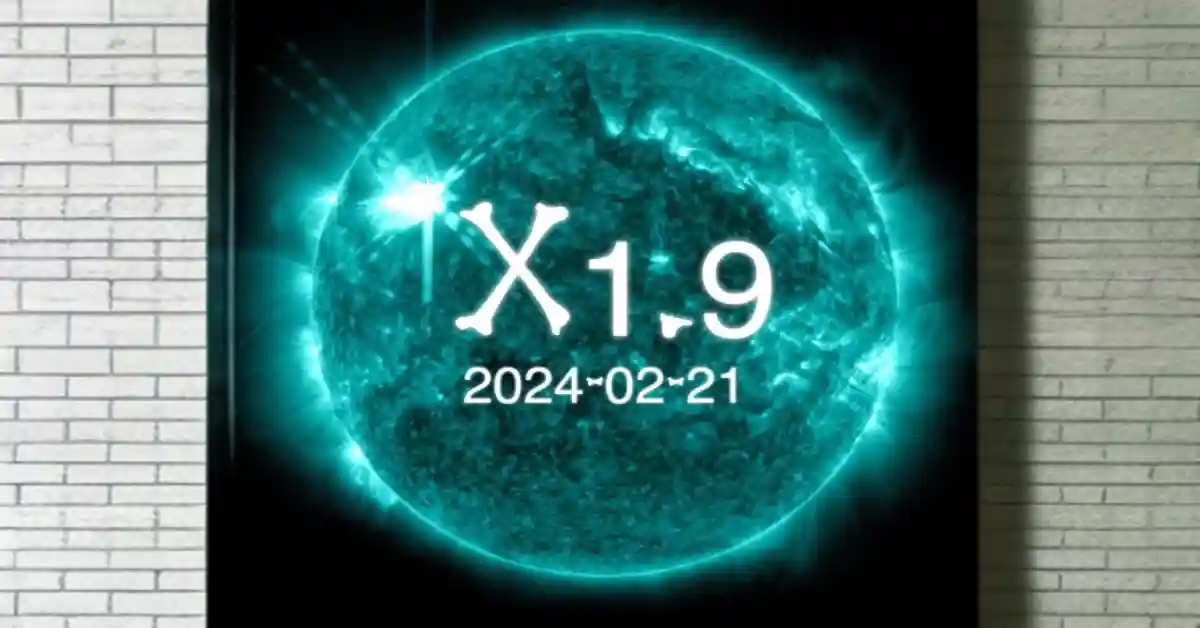Table of Contents
In the realm of celestial phenomena, the sunspot AR3590 has emerged as a formidable force, captivating the attention of space enthusiasts and experts alike. This active region, with its ‘beta-gamma-delta’ magnetic field, has recently exhibited its might with a potent X1.8-class solar flare. The repercussions of this cosmic spectacle extend beyond the confines of space, sparking a shortwave radio blackout over the western United States and the Pacific Ocean.
The Spectacle Unveiled
Late on February 21st at 23:07 UT (4:37 am IST, February 22nd), NASA’s Solar Dynamics Observatory immortalized the intense burst of energy unleashed by AR3590 in a captivating extreme ultraviolet flash. While the immediate aftermath did not manifest as a conspicuous coronal mass ejection (CME), the vigilant eyes of NOAA analysts are fixated on data from the SOHO coronagraph, probing for any indications of an impending storm cloud.
X-Class Solar Flare Alert!
The renowned space weather expert, Dr. Tamitha Skov, weighed in on the celestial drama, confirming the X-class solar flare activity. In her expert analysis, she elucidated, “Finally, a little more action on our Earth-facing Sun.” Dr. Skov hinted at the potential of a slight Earth-directed component in the filament eruption, foreseeing a solar storm in tandem with a swift wind chaser. The timeline for potential aurora displays is set around February 26th.
Radiant Warnings and Flare Frenzy
Dr. Skov, not one to mince words, issued radiation alerts, underscoring the significance of an X1.9 flare from region 3590. This flare, unleashing an R3-level Radio Blackout, cast its influence over a vast expanse, including Western USA and Canada, New Zealand, Eastern Australia, and Indonesia. The impact on radio and GPS/GNSS systems reverberated over Australia, Indonesia, India, and East Africa, albeit briefly.
Classification of Solar Fury
Solar flares, intense bursts of radiation from the sun’s surface, are categorized based on intensity. The X-class designation denotes the most powerful flares, with X1 flares being tenfold stronger than their X0 counterparts. AR3590, in its current volatile state, has exhibited a succession of rapid-fire X-class flares, leaving space weather enthusiasts on the edge of their seats.
Aurora Anticipation
While the solar storm may not reach a significant magnitude, the interplay between the filament eruption and fast solar wind sets the stage for moderate auroral displays around February 26th. Skywatchers and space weather photographers, particularly those in high-latitude regions, should keep a keen eye on the night sky during this timeframe for a potential spectacle of northern lights.
In conclusion, the cosmic theatrics orchestrated by sunspot have etched a riveting narrative across the celestial canvas. As we brace for potential aurora displays, the dynamic interplay of magnetic forces on our Earth-facing Sun unfolds, leaving us in awe of the cosmic ballet playing out millions of miles away.
Previous Post
